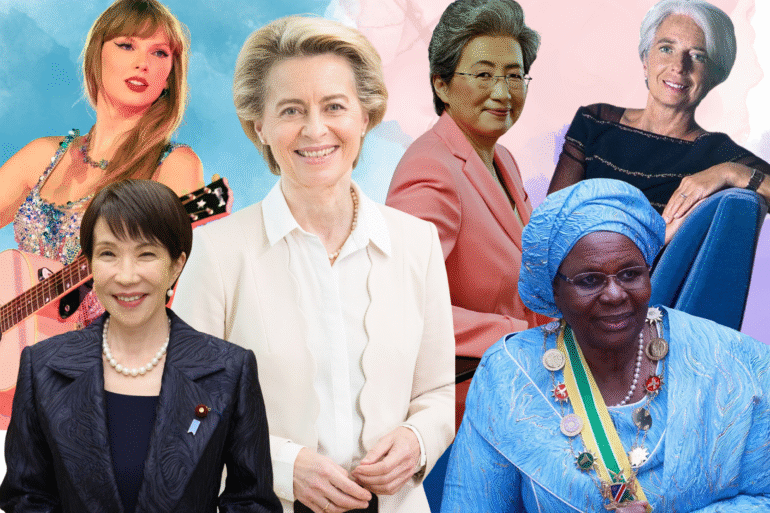The recent layoffs by the conglomerate follow a disturbing trend across US media. Here’s why you should care.
It seemed like a moment straight out of a movie when Anne Hathaway, in the middle of getting ready for a Vanity Fair photoshoot in New York, walked out of the set in solidarity with over 400 union members from Condé Nast who were staging a 24-hour work stoppage last Tuesday, January 23, 2023.
The union members held the rally and stoppage on the day of the 2024 Oscar nominations—an important media day for some of Condé Nast’s titles. They took to the streets in front of their New York office to protest the recent layoffs and alleged unlawful negotiation practices. They also called for readers to cease sharing and clicking content from all digital and social formats of their titles.
The protest took place in light of two major shake ups in the company. First, back in November 2023, Condé Nast CEO Roger Lynch released a memo discussing the layoff of 5% of company staff or approximately 300 employees. The CEO acknowledged the fast-paced changes in digital videos across social media as a factor in streamlining their operations; this implied that most of the staffers affected by the cut are those working on the said format.
Second, just last week, Condé Nast chief content officer and global editorial director Anna Wintour announced via a company memo that they would be merging digital music publication Pitchfork, which the company bought in 2015 from founder Ryan Schreiber, with their men’s title, GQ. The move resulted in the layoff of several Pitchfork staffers, including features editor Jill Mapes and editor-in-chief Puja Patel.
According to their official website, Condé Nast’s union includes employees from Allure, Architectural Digest, Bon Appétit, Condé Nast Traveler, Epicurious, Glamour, GQ, Self, Teen Vogue, them., Vanity Fair, Vogue, and Condé Nast Entertainment. On top of the recent layoffs, several union members have decried Condé Nast’s unfair labor practices, which include employees not getting yearly raises, scant opportunities for promotion, little to no power on the table for negotiations, no overtime pay and benefits, and insecure job stability (including reliance on “permanlancers” which may get cut off at a moment’s notice).



This video from Condé Union’s official Instagram account captures the crowd shouting chants like “Bosses wear Prada, workers get nada”; the caption also reads, “Bosses wear Dior, workers need more,” highlighting not only the dire financial and professional situations Condé Nast staffers find themselves in, but also the disparity between salaries of upper management and the rank and file employees.
Among Condé Nast’s editors-in-chief and upper management, Wintour’s working life has been one of the most storied and speculated one—think The Devil Wears Prada and the unauthorized Anna: The Biography.
While no official records of her salary are published, the New York Magazine wrote in 2005 that Wintour earned approximately $2 million annually at Vogue; with her bigger roles at Condé Nast today, this figure has likely already ballooned. It was reported a decade ago that Wintour gets a clothing allowance of approximately $200,000 from Condé Nast. No figures are given for the clothes that she wears on the daily and the gifts that she receives from high-end designers, but she has often been spotted wearing the latest designs after they’ve graced the runways of major fashion shows.
What’s interesting, however, is that Wintour’s clothing allowance is exponentially larger than the listed salary of her personal assistant. In June 2023, Condé Nast listed an opening for an assistant to American Vogue’s editor-in-chief and Condé Nast’s global chief content officer (both Wintour’s titles). The salary range was listed at $60,000 to $80,000. In comparison back in 2005, Anna Wintour’s assistant, Sylvana Soto-Ward, was reported to earn a meager $40,000.
The developments at Condé Nast are not isolated. Yesterday, staffers at New York Daily News and Forbes also staged a protest amid similar difficulties with the media landscape. It’s the first walkout for the business title, which was founded in 1917. Over on the West Coast, guild members of the Los Angeles Times organized a one-day strike amid possible cuts of over 20% of their newsroom and the departure of several key editors of the paper.
While no official salaries are posted for their chiefs, salary details on workplace comparison and review website Glassdoor show the average rates for staffers in titles like the New York Times, Los Angeles Times, and the Washington Post. The site lists annual salaries of roughly $40K-$60K for entry-level positions like editorial aides and staff writers; around $60K-$90K for assistant editors; between $90K and $150K for senior and multiplatform editors, and so on. And going by comparative scales, it is safe to assume that the chiefs of these titles earn figures similar to or above Wintour’s or Condé Nast’s executive management.
Across the board, publishers have cited challenges in the current advertising landscape, rapidly changing digital behavior and preferences, and the social media climate as reasons for cost-cutting and streamlining of operations, leading to massive layoffs. But more than securing the jobs of staffers, the cuts are seen by media veterans as an inopportune event at a time when rampant misinformation may hinder the fair and objective coverage of the 2024 United States Presidential Elections.



Granted, the strikes taking place in various newsrooms across America may not have a direct and immediate effect on the Philippines or our media landscape. However, it does shed light on our lawful right to demand for fair and equitable wages and working conditions. After all, it has been an open secret (and oftentimes, a sad, trite joke) among writers, editors, and creatives within the industry that publishing—beyond its apparent glitz and glamor—isn’t the field for those wanting to get rich.
Stories of stagnant salaries, unpaid contributors and freelancers, and overtime hours without pay have been mainstays in small talk among journalists who bump into each other in coverages and post-event meals over beer or the occasional cigarette break.
These unfortunate situations have prompted many writers and journalists locally to cross over to “the other side”— that is, working in public relations or in creative agencies. Some creatives, on a freelance basis, even juggle both sides of the coin. Several testimonies have cited how wages are quite better in these agencies, though they start within a similar range as that of a journalist’s.
However, agency life has also generated its own lore of challenging working conditions, from long hours, limited creativity amid restrictive client briefs, and high attrition rates, among others. And besides, what good is there in churning a great communication plan if there’s a shortage of journalists and editors—and good ones, at that—who will help you spread the word on your project or campaign?
I admit getting quite personal and pessimistic at this juncture, but I’d like to end on an ideal note: that the strikes happening in the world’s most influential media landscape can help us shape better practices for staffers here in the Philippines—or, for our creatives to get empowered to demand what is rightfully fair for their services rendered.








